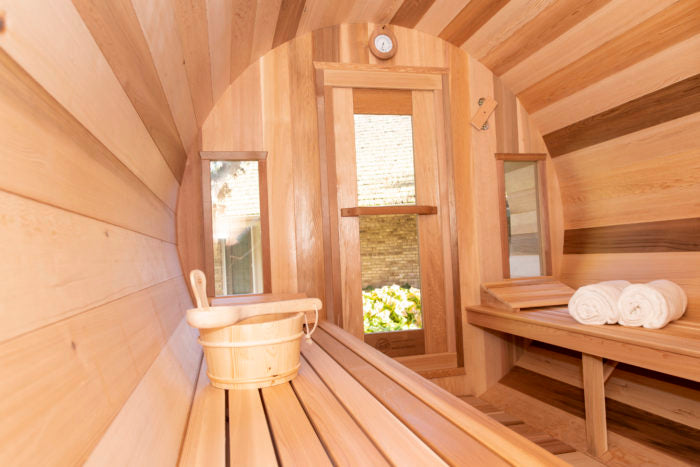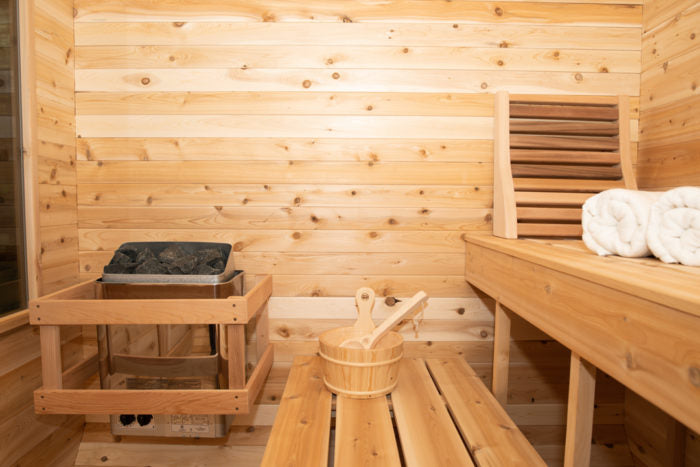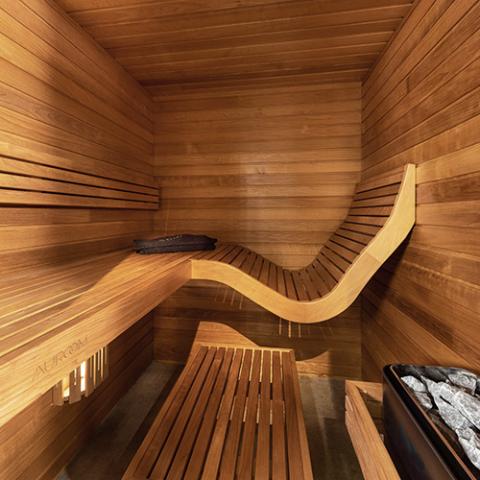The Buzz on Traditional Sauna
Table of ContentsRumored Buzz on Traditional SaunaNot known Details About Traditional Sauna Traditional Sauna Fundamentals Explained4 Simple Techniques For Traditional SaunaThe Main Principles Of Traditional Sauna
Many of the weight shed in a sauna is water loss and is re-gained upon rehydrating. Without an uncertainty sauna can be a vital component of a healthy weight loss program. To check out the differences between traditional and IR saunas, I will divide these right into verifiable, theoretical, and made distinctions.Thus, the hottest point in the saunawhich is at the ceiling directly over the sauna heateris normally in between 185 and 190 F. Claims that a standard sauna surpasses 200 F is simply not real and not relevant for electrical saunas sold in the United States. The temperature for a far-infrared sauna is usually set between 120 and 140 F; nevertheless, unlike the conventional sauna, the goal in and IR space is not to attain a heat.
Since of this, the temperature difference is nearly pointless, given that extreme sweating results in both sauna kinds, yet the method of heating up the body is different. In an IR sauna the bather will certainly really feel warm and will sweat profusely, yet at much lower temperature levels (Traditional Sauna). Therefore, if the objective is to spend longer amount of times in the sauna, the IR sauna is a great choice
When a traditional sauna has actually been appropriately heated, the sauna walls are warm, the air temperature level has achieved established temperature level and the rocks are very heated. As a fascinating side note, the warmed wall surfaces and the rocks are releasing far-infrared heat, incorporated with the heated air, to create an "enveloping warm".
The smart Trick of Traditional Sauna That Nobody is Talking About

When the high temperature level is achieved, the aspects cycle on and off to keep the heat. The majority of typical sauna customers enjoy putting water over the rocks to create heavy steam to elevate sauna humidity degrees. The benefits of pouring water over the rocks consist of: making the room a lot more comfy, moistening the nasal flows, and enabling the use of aromatherapy by blending essential oils with the water.

When the energy goes into the body, it creates the body temperature level to raise and inevitably leads to sweat. In an infrared sauna it is very important for the emitters/heaters to continue to be on practically frequently. Given that there is no mass of rocks to keep heat, the sauna will certainly cool if the emitters turned off.
As stated above, the sauna bather in an infrared space intends to position himself before operating emitters to get optimal gain from the warmth. The heating time for both rooms can be very various, depending upon just how the rooms are utilized. For a conventional sauna, a bather must enable 30-40 minutes for the space to attain a wanted temperature level and to effectively pre-heat the rocks.
Traditional Sauna for Beginners
A well constructed sauna will generally achieve a temperature of 150-160 F in about 30-40 mins. For hotter temperature levels, the room might require to warm for a longer duration. Once the area attains set temperature level, the heater will certainly cycle on and off, generally operating concerning 50% of the see post time. The shielded wall surfaces and the heated rocks will certainly keep the area hot and at stable temperatures.

Typical saunas have a tendency to be bigger (hence use even more electricity) than infrared saunas, although standard saunas are definitely readily available in one and two individual sizes too. For a two-person typical sauna, 5x6 or 5x7 dimension is most prominent. The leading bench can pleasantly seat two or three people and is additionally long sufficient to relax during the sauna session.
10 Easy Facts About Traditional Sauna Shown
The typical price per kWH of electricity in the united state is about $0.11, so a 4.5 kW heating unit will cost approximately $.50 to compete one hour, if the heating unit runs continually for one hour. Commonly a sauna heating system will certainly run for 75% of the very first hour and 50% of succeeding hours on given that official website the components cycle once the set temperature is accomplished.

There is a hardly ever reviewed distinction in the social experience in between the 2 areas. While our society has actually shed a few of the social benefit of the standard sauna experience, it can be really socially rewarding (Traditional Sauna). From family time in the sauna, to heart-felt discussions with loved ones, to sauna partiesthe standard sauna experience can lead to intimate socializing
How Traditional Sauna can Save You Time, Stress, and Money.
The majority of greater end infrared spaces include tinted light therapy, sound systems and full-glass fronts.